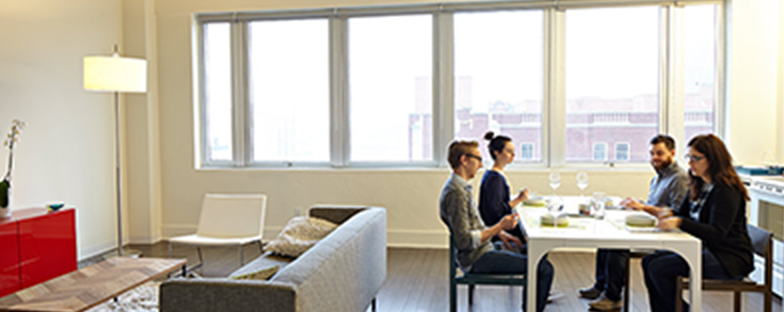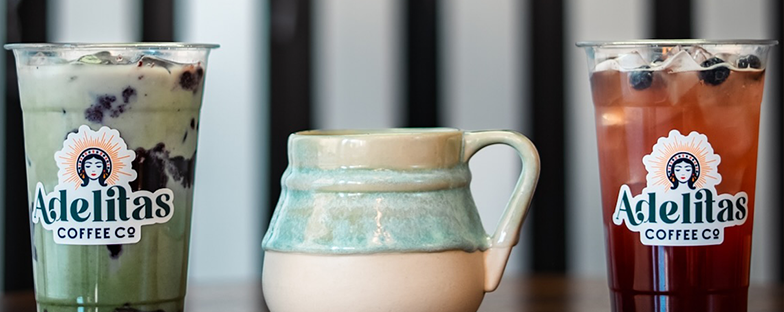The LUX is set on developing a unique sense of community and place in Downtown Wichita while keeping true to the building's original 1950s character. It's modern, Downtown living—in a city that is in the midst of a great revitalization! Join us.

City living possesses an energy, a buzz. Out your window there's amazing architecture - rich in history. You can walk to grab a bite to eat or go see a concert. You CAN have urban living in Wichita when you live at The LUX. Go on. Find your new home Downtown.
Looking for commercial space?
Residents of The LUX have the convenience of never leaving the building for stellar coffee and noms. Adelitas Coffee Co is located on the first floor of The LUX. It’s your pit stop before work, for a bite to eat or perhaps between episodes of your favorite show.
See what else we have to offerRiver City Brewery is turning into a magical Christmas experience with Miracle on Mosley Street, a holiday celebration full of festive cheer! Dine with a holiday inspired menu, sip on seasonal brews, enjoy Christmas cocktails, and soak up the warm glow of brights lights and music. Whether you’re coming for the drinks, the laughter, or just the holiday spirit, this festive event is the perfect way to celebrate the most wonderful time of the year!
We had so much fun serving you for our Halloween Popup, we’re going ALL IN on Christmas!! Join us as we transform our space into TINSEL TOWN!!
Enjoy super delicious holiday cocktails curated for pure holly jolly fun, including shot-skis, and fun drinking vessels! A holiday food menu will keep you fed good, like Santa! Groups big and small welcome with no reservations needed! Photo ops galore, and just the most beautiful setting for your drinking and dining experience!
We would like to sincerely thank you all for your support, and we hope that we can add to your enjoyment this holiday season! Save the neck for me, Clark!
Starting with the Wreath Festival and lasting through to the New Year, the Museum maintains its holiday decorating tradition with garlands and ornaments strewn over the stairs and through the second floor. There, in the West Gallery, visitors will find an exhibit of miniature Christmas trees, created by Wichita artist Sylvia Jackson. With incredible detail and creativity, these trees may serve as inspiration for any Christmas enthusiast.
This private collection of hand-decorated trees has been loaned to the Museum for the holiday season by the artist herself, Sylvia Jackson. Beginning in the 1970s, with the creation of two Victorian-style trees for her sons, the collection has grown as new trees have been designed and displayed during the annual Trees of Christmas event at the First Church of the Nazarene. May the many joys of the season be yours as you share the charm of this very personal collection.
Stepping inside our garden igloos is like never having to say goodbye to our beer garden at the end of summer. Come experience this winter wonderland with us!
Please read through all information before booking!
Each igloo has its own cozy electric fireplace heater, a dedicated Bluetooth speaker and seating for up to 8 people. We block off every igloo for 30 minutes after each guest to clean and sanitize. Our full food and drink menus will be offered with a server to take care of anything you need.
Garden igloos are for guests 21+
|
|